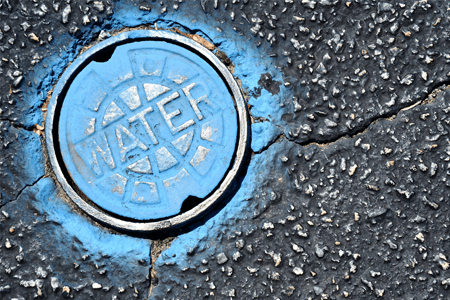Celebrating 115 Years of Safe Drinking Water – American Chemistry Council
Celebrating 115 Years of Safe Drinking Water American Chemistry Council


115th Anniversary of Continuous Chlorine Disinfection in U.S. Public Water Supplies

Today, on September 26, 2023, we celebrate a historic milestone: the 115th anniversary of continuous chlorine disinfection in U.S. public water supplies. This momentous event, which transformed American public health, unfolded in Jersey City, New Jersey.
Safe, accessible drinking water, made possible through water treatment, is often taken for granted. However, this achievement didn’t happen overnight and traces back to Jersey City.
The Role of Chlorine in Water Treatment
In the early 1900s, using chlorine to treat drinking water was groundbreaking. It led to a significant reduction in waterborne diseases, with Dr. John L. Leal playing a crucial role.
Jersey City faced high rates of waterborne diseases, especially among children. Dr. Leal, a physician and health officer, proposed adding a small amount of “chloride of lime” to drinking water, a revolutionary idea.
High-profile court cases paved the way for Dr. Leal and engineer George Warren Fuller to put this concept to the test. By 1914, 53% of U.S. public water supplies used chlorinated water.
[embedded content]
The Importance of Clean Water
While we celebrate this achievement, we must remember that the battle for clean water continues. @WHO reports 361,000 children under 5 die annually due to inadequate access to safe water, sanitation, and hygiene. Let’s join UN in pursuing Sustainable Development Goal 6—clean water and sanitation for all, a crucial step toward other SDGs. The mission to save lives through chlorine disinfection remains as crucial as ever. #CleanWater #PublicHealth #SDG6
Sustainable Development Goals
- Goal 1: No Poverty
- Goal 2: Zero Hunger
- Goal 3: Good Health and Well-being
- Goal 4: Quality Education
- Goal 5: Gender Equality
- Goal 6: Clean Water and Sanitation
- Goal 7: Affordable and Clean Energy
- Goal 8: Decent Work and Economic Growth
- Goal 9: Industry, Innovation, and Infrastructure
- Goal 10: Reduced Inequalities
- Goal 11: Sustainable Cities and Communities
- Goal 12: Responsible Consumption and Production
- Goal 13: Climate Action
- Goal 14: Life Below Water
- Goal 15: Life on Land
- Goal 16: Peace, Justice, and Strong Institutions
- Goal 17: Partnerships for the Goals
SDGs, Targets, and Indicators
| SDGs | Targets | Indicators |
|---|---|---|
| SDG 6: Clean Water and Sanitation | Target 6.1: By 2030, achieve universal and equitable access to safe and affordable drinking water for all | Indicator 6.1.1: Proportion of population using safely managed drinking water services |
| SDG 6: Clean Water and Sanitation | Target 6.2: By 2030, achieve access to adequate and equitable sanitation and hygiene for all and end open defecation, paying special attention to the needs of women and girls and those in vulnerable situations | Indicator 6.2.1: Proportion of population using safely managed sanitation services, including a handwashing facility with soap and water |
1. Which SDGs are addressed or connected to the issues highlighted in the article?
SDG 6: Clean Water and Sanitation
The article highlights the importance of safe and accessible drinking water, as well as the use of chlorine disinfection to reduce waterborne diseases. It also mentions the ongoing battle for clean water, with statistics from the World Health Organization (WHO) stating that inadequate access to safe water leads to the death of 361,000 children under 5 annually. The article specifically mentions the pursuit of SDG 6 as a crucial step towards achieving other SDGs.
2. What specific targets under those SDGs can be identified based on the article’s content?
Target 6.1: By 2030, achieve universal and equitable access to safe and affordable drinking water for all
Target 6.2: By 2030, achieve access to adequate and equitable sanitation and hygiene for all and end open defecation, paying special attention to the needs of women and girls and those in vulnerable situations
The article emphasizes the importance of safe drinking water and mentions the use of chlorine disinfection to treat waterborne diseases. This aligns with Target 6.1, which aims to provide universal access to safe drinking water. Additionally, the article mentions the need for sanitation and hygiene, which relates to Target 6.2.
3. Are there any indicators mentioned or implied in the article that can be used to measure progress towards the identified targets?
Indicator 6.1.1: Proportion of population using safely managed drinking water services
Indicator 6.2.1: Proportion of population using safely managed sanitation services, including a handwashing facility with soap and water
The article does not explicitly mention specific indicators. However, it discusses the importance of safe drinking water and sanitation, which can be measured using Indicator 6.1.1 (proportion of population using safely managed drinking water services) and Indicator 6.2.1 (proportion of population using safely managed sanitation services, including a handwashing facility with soap and water).
Behold! This splendid article springs forth from the wellspring of knowledge, shaped by a wondrous proprietary AI technology that delved into a vast ocean of data, illuminating the path towards the Sustainable Development Goals. Remember that all rights are reserved by SDG Investors LLC, empowering us to champion progress together.
Source: americanchemistry.com

Join us, as fellow seekers of change, on a transformative journey at https://sdgtalks.ai/welcome, where you can become a member and actively contribute to shaping a brighter future.







